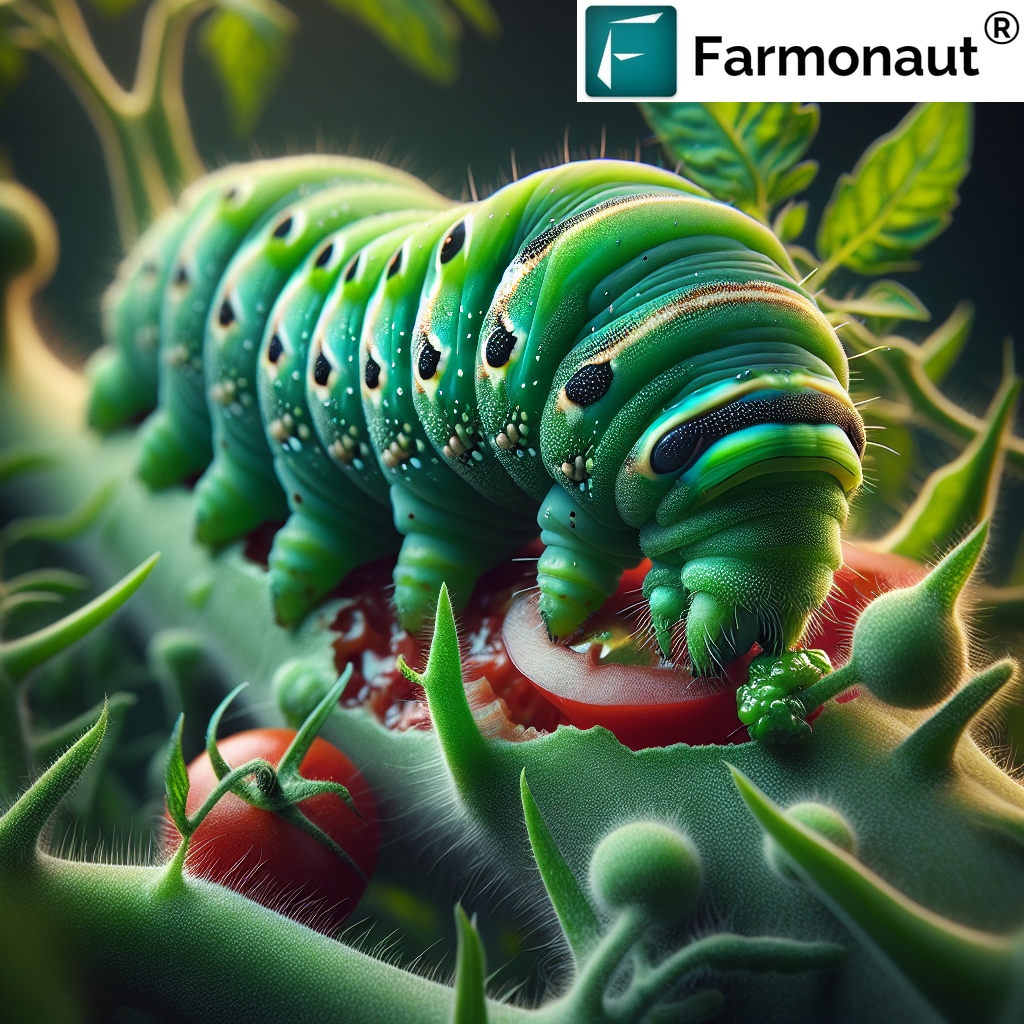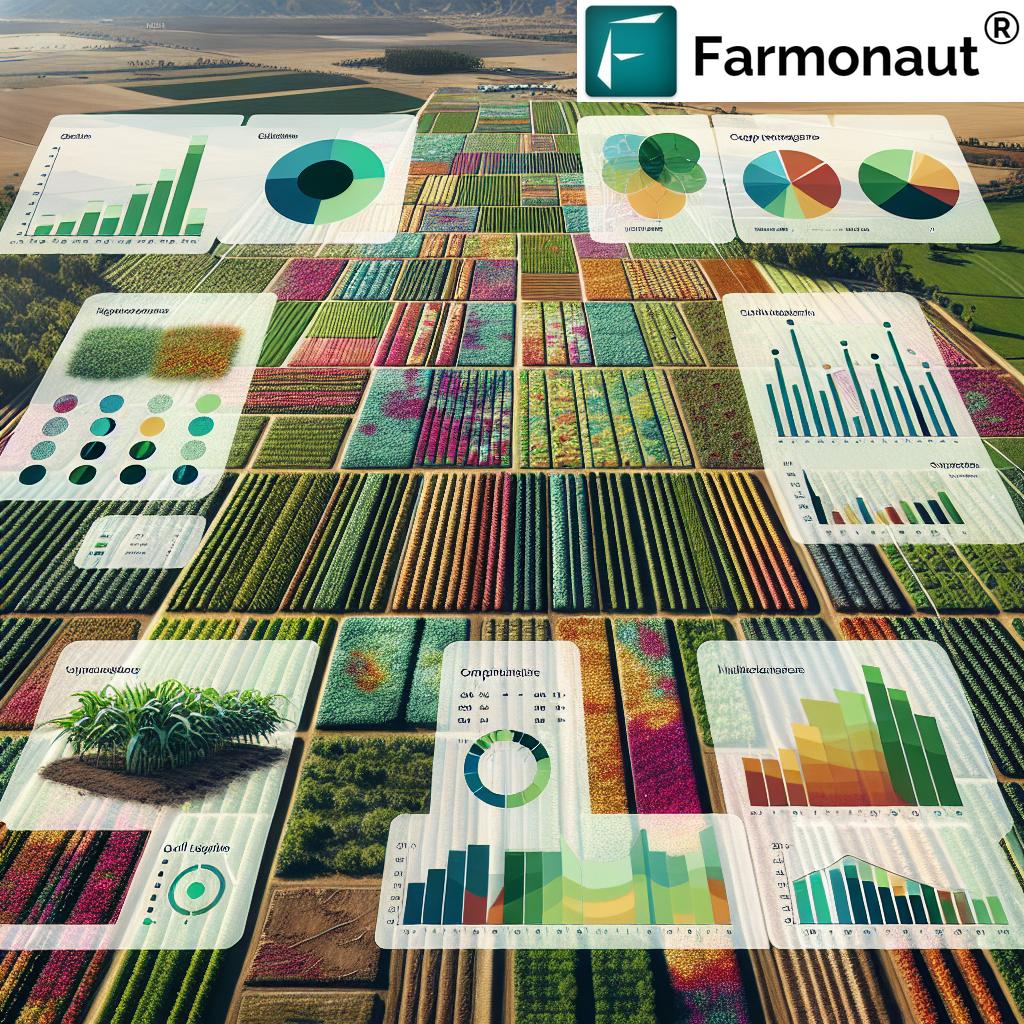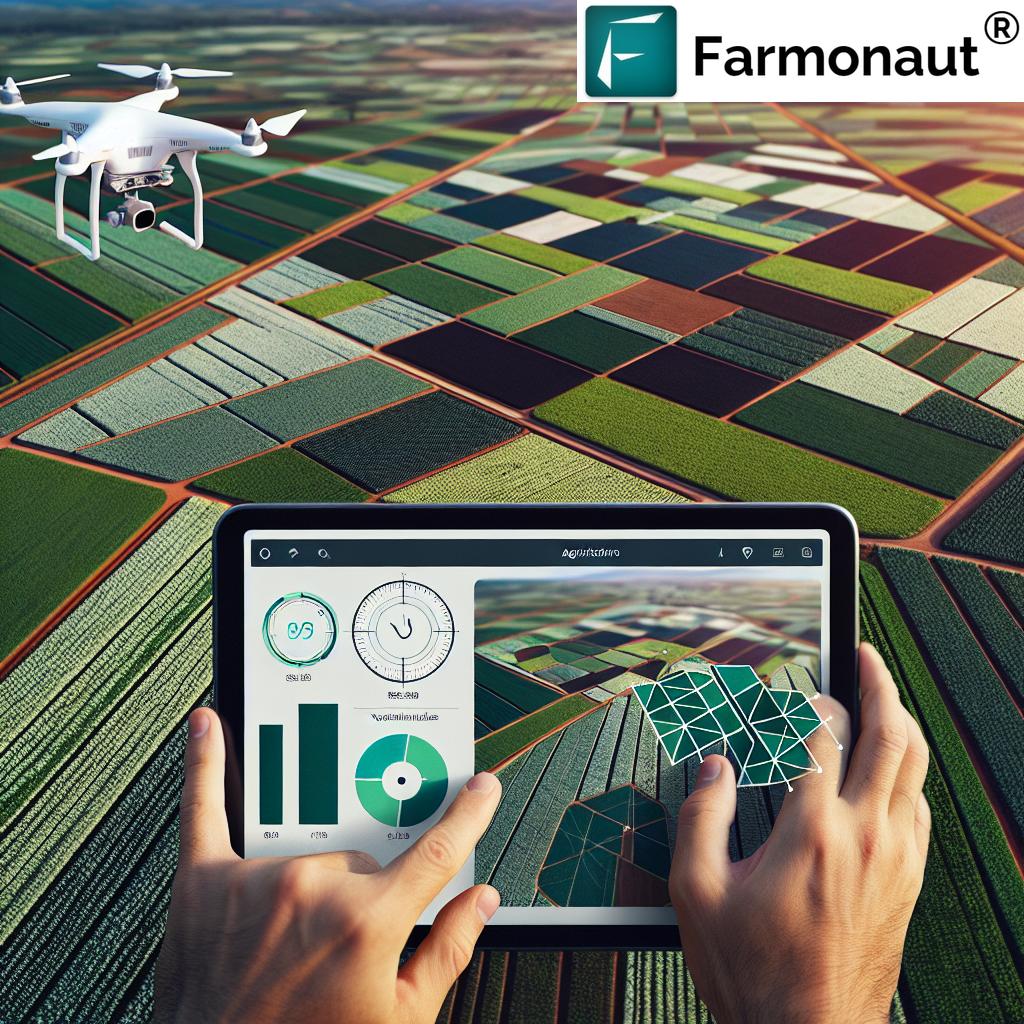Mastering Bollworm Control: Identifying and Managing Tomato Pests from Larvae to Adult Stages

As agricultural technology experts at Farmonaut, we understand the challenges farmers face when dealing with pests like bollworms in their tomato crops. In this comprehensive guide, we’ll explore the various stages of bollworms, their impact on tomato production, and effective management strategies. We’ll also discuss how our satellite-based farm management solutions can help you stay ahead of pest infestations and optimize your crop yields.
Understanding Bollworms in Tomatoes
Bollworms are a significant threat to tomato crops worldwide. These pests can cause extensive damage to fruits and plants, leading to substantial yield losses if not properly managed. Let’s delve into the different types of bollworms that commonly affect tomato plants:
- Green bollworm (Helicoverpa armigera)
- Pink bollworm (Pectinophora gossypiella)
- Spotted bollworm (Earias vittella)
The Life Cycle of Bollworms
Understanding the life cycle of bollworms is crucial for effective pest management. The life cycle typically consists of four stages:
- Egg
- Larva
- Pupa
- Adult
Let’s focus on the most destructive stage: the larval stage.
Bollworm Larvae: The Main Culprits
Bollworm larvae are responsible for the majority of damage to tomato plants. These caterpillars feed voraciously on leaves, flowers, and fruits, causing significant economic losses. Identifying the different types of bollworm larvae is essential for implementing targeted control measures:
- Green bollworm larvae: These caterpillars are typically green or brown with pale stripes running along their bodies. They can grow up to 40mm in length.
- Pink bollworm larvae: The larvae of pink bollworms are small, pinkish-white caterpillars that primarily feed inside the fruits.
- Spotted bollworm larvae: These larvae are characterized by their distinctive spots and can vary in color from green to pink.

Identifying Bollworm Infestations in Tomato Crops
Early detection of bollworm infestations is crucial for effective management. Here are some signs to look out for:
- Small holes in leaves and fruits
- Presence of frass (insect excrement) on plants
- Wilting or yellowing of leaves
- Premature fruit drop
- Visible larvae on plants or inside damaged fruits
At Farmonaut, we leverage advanced satellite imagery and AI technology to help farmers detect pest infestations early. Our Farmonaut app provides real-time crop health monitoring, allowing you to spot potential bollworm problems before they escalate.
Integrated Pest Management for Bollworm Control
Effective bollworm management requires an integrated approach. Here are some strategies we recommend:
1. Cultural Control
- Crop rotation
- Proper field sanitation
- Timely planting and harvesting
- Use of trap crops
2. Biological Control
- Encouraging natural predators (e.g., ladybugs, lacewings)
- Use of parasitic wasps (Trichogramma spp.)
- Application of Bacillus thuringiensis (Bt) products
3. Chemical Control
When necessary, chemical control can be used as part of an integrated pest management program. However, it’s crucial to use pesticides responsibly and in accordance with local regulations. Our Farmonaut app can help you track pesticide applications and ensure compliance with safety guidelines.
4. Monitoring and Surveillance
Regular monitoring of your tomato crops is essential for early detection of bollworm infestations. Our satellite-based crop health monitoring system provides valuable insights into crop stress, allowing you to identify potential pest problems quickly.
The Role of Technology in Bollworm Management
At Farmonaut, we believe that technology plays a crucial role in modern pest management. Our satellite-based farm management solutions offer several advantages over traditional monitoring methods:
| Feature | Farmonaut Satellite System | Drone-based Monitoring | IoT-based Monitoring |
|---|---|---|---|
| Coverage Area | Large-scale (hundreds to thousands of hectares) | Limited (tens of hectares) | Limited (specific points) |
| Frequency of Updates | Regular (every 3-5 days) | As needed (labor-intensive) | Continuous (but limited points) |
| Cost-effectiveness | High | Medium | Low (initial setup costs) |
| Data Analysis | Advanced AI and machine learning | Moderate | Basic to moderate |
| Ease of Use | User-friendly app interface | Requires trained operators | Requires technical setup |
Our satellite-based system provides comprehensive coverage of your entire farm, allowing you to detect pest hotspots and stress areas quickly. This enables more targeted and efficient pest management strategies.
Leveraging Farmonaut’s Technology for Bollworm Control
Here’s how our technology can assist you in managing bollworm infestations:
1. Early Detection
Our satellite imagery and AI algorithms can detect changes in crop health that may indicate pest infestations. This allows you to take action before the problem spreads.
2. Precision Application
By identifying specific areas of concern, you can apply pesticides or biological controls more precisely, reducing costs and environmental impact.
3. Data-Driven Decision Making
Our Farmonaut API provides access to historical and real-time data, enabling you to make informed decisions about pest management strategies.
4. Integration with Other Farm Management Tools
Our platform integrates seamlessly with other farm management tools, allowing you to create a comprehensive pest management system.
Case Study: Successful Bollworm Management with Farmonaut
While we don’t have specific case studies to share, we’ve seen numerous success stories from farmers using our technology to manage bollworm infestations effectively. By leveraging our satellite imagery and AI-powered insights, farmers have been able to:
- Detect bollworm infestations up to two weeks earlier than traditional scouting methods
- Reduce pesticide use by up to 30% through targeted applications
- Increase tomato yields by 15-20% through improved pest management
Future Trends in Bollworm Management
As we look to the future, we see several exciting developments in bollworm management:
- Advanced genetic resistance in tomato varieties
- Novel biological control agents
- Integration of machine learning and IoT for real-time pest monitoring
- Precision application technologies for more targeted pest control
At Farmonaut, we’re committed to staying at the forefront of these developments, continuously improving our technology to provide farmers with the most effective tools for pest management.
Conclusion
Managing bollworms in tomatoes requires a comprehensive approach that combines traditional pest management strategies with cutting-edge technology. By understanding the life cycle of bollworms, implementing integrated pest management practices, and leveraging advanced tools like Farmonaut’s satellite-based monitoring system, farmers can effectively control these destructive pests and optimize their tomato yields.
We invite you to explore how Farmonaut can revolutionize your approach to pest management and overall farm productivity. Visit our website or download our app to get started:
FAQs
Q: What is the most effective way to control bollworms in tomatoes?
A: The most effective approach is an integrated pest management (IPM) strategy that combines cultural, biological, and chemical control methods. This includes crop rotation, encouraging natural predators, and using targeted pesticides when necessary.
Q: How can I identify bollworm larvae in my tomato plants?
A: Look for small holes in leaves and fruits, presence of frass (insect excrement), and visible caterpillars on plants. Bollworm larvae can vary in color but are typically green, pink, or spotted depending on the species.
Q: Can satellite imagery really detect bollworm infestations?
A: While satellite imagery can’t directly detect individual pests, it can identify changes in crop health and stress patterns that may indicate pest infestations. Our AI algorithms analyze these patterns to alert farmers to potential problems.
Q: How often should I monitor my tomato crops for bollworms?
A: Regular monitoring is crucial. With traditional methods, weekly scouting is recommended. However, our satellite-based system provides updates every 3-5 days, allowing for more frequent and comprehensive monitoring.
Q: Are there any organic methods for controlling bollworms?
A: Yes, several organic methods can be effective, including the use of Bacillus thuringiensis (Bt) products, encouraging natural predators, and implementing proper crop rotation and sanitation practices.
Subscribe to Farmonaut
Ready to take your farm management to the next level? Subscribe to Farmonaut and gain access to our advanced satellite-based monitoring and AI-powered insights:
By leveraging our technology, you’ll be better equipped to manage bollworms and other pests, optimize your crop yields, and increase your farm’s profitability. Join the Farmonaut community today and experience the future of precision agriculture!












